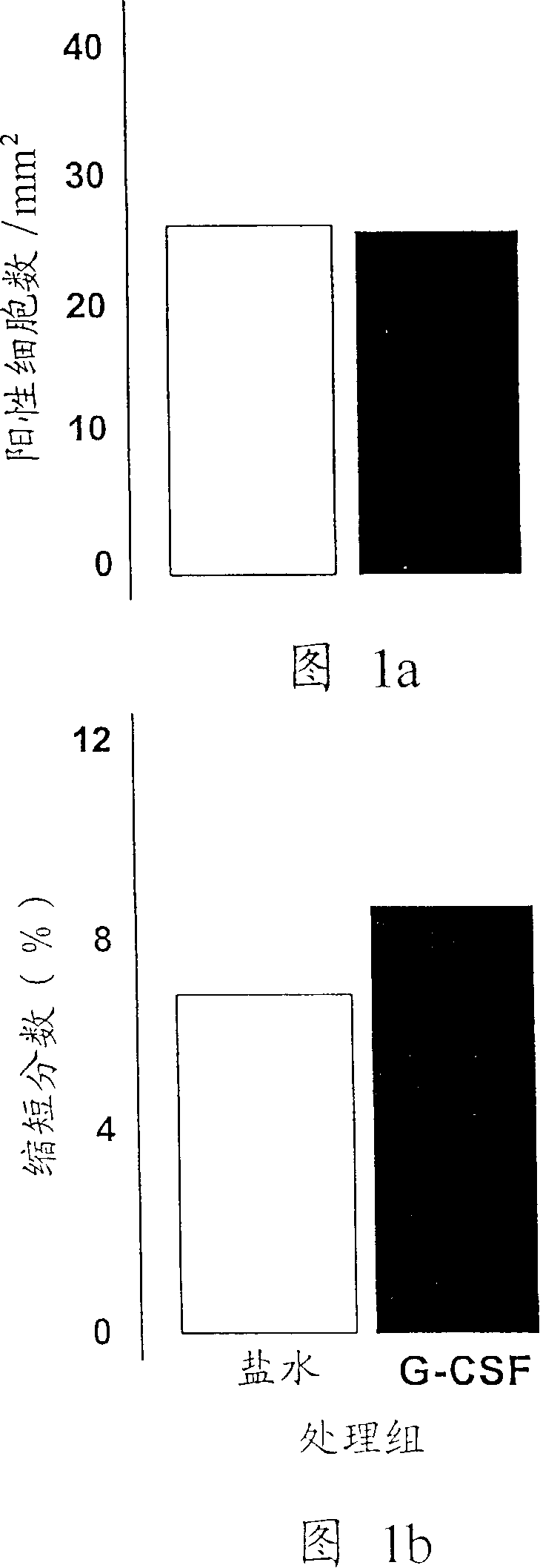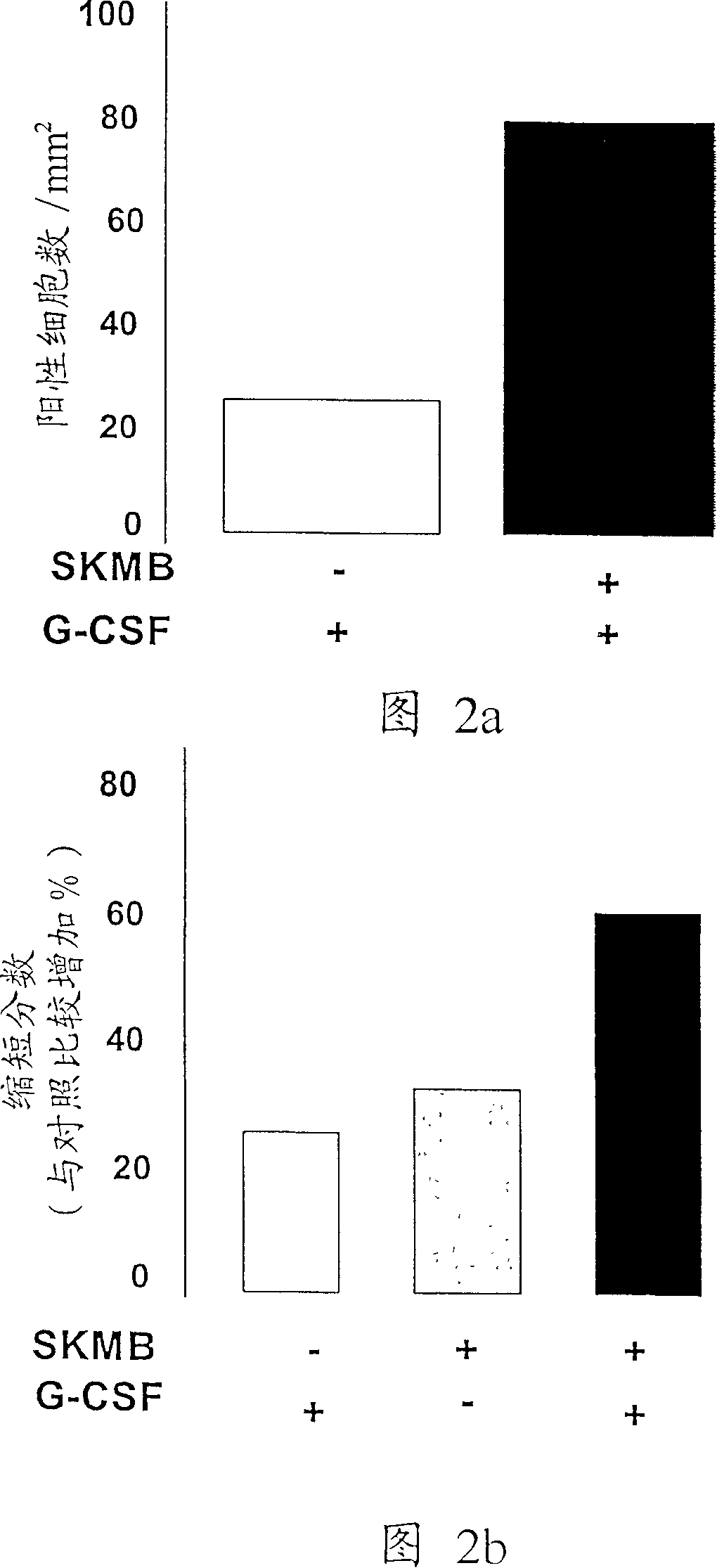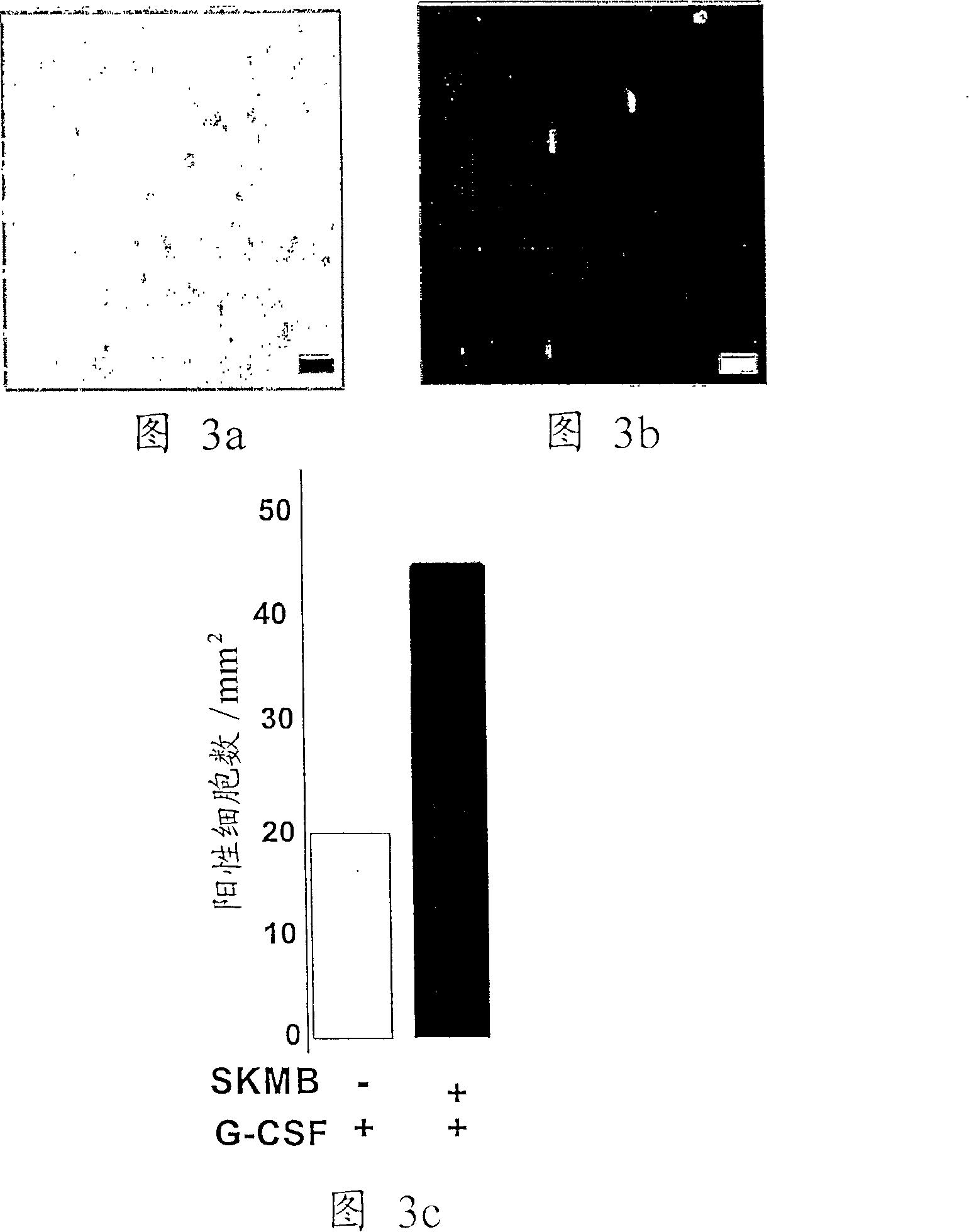Stromal cell-derived factor-1 mediates stem cell homing and tissue regeneration in ischemic cardiomyopathy
A technology of cells and myocardium, applied in the field of tissue regeneration of ischemic cardiomyopathy
- Summary
- Abstract
- Description
- Claims
- Application Information
AI Technical Summary
Problems solved by technology
Method used
Image
Examples
Embodiment
[0146] The present invention is further illustrated by the following specific examples. The examples given are for illustrative purposes only and are not intended to limit the scope or content of the invention in any way.
[0147] Effect of G-CSF on stem cell mobilization after 8 weeks of MI
[0148] In order to determine whether G-CSF-induced stem cell mobilization can induce myocardial regeneration in rats using the established model of ischemic cardiomyopathy, rats 8 weeks after MI were randomly assigned to receive recombinant human G-CSF (125 μg / kg / day, 5 days, intraperitoneal injection) group or saline group. Five days after initiation of G-CSF treatment, blood samples were obtained to demonstrate bone marrow stimulation, and the G-CSF group exhibited three-fold higher leukemia counts (37.3±5.3 cells / μl) compared to the saline group (11.8±4.0 cells / μl). Administration of 5-bromo-2'-deoxyuridine BrdU for 14 days started on the last day of G-CSF administration to label...
PUM
 Login to View More
Login to View More Abstract
Description
Claims
Application Information
 Login to View More
Login to View More - R&D
- Intellectual Property
- Life Sciences
- Materials
- Tech Scout
- Unparalleled Data Quality
- Higher Quality Content
- 60% Fewer Hallucinations
Browse by: Latest US Patents, China's latest patents, Technical Efficacy Thesaurus, Application Domain, Technology Topic, Popular Technical Reports.
© 2025 PatSnap. All rights reserved.Legal|Privacy policy|Modern Slavery Act Transparency Statement|Sitemap|About US| Contact US: help@patsnap.com



